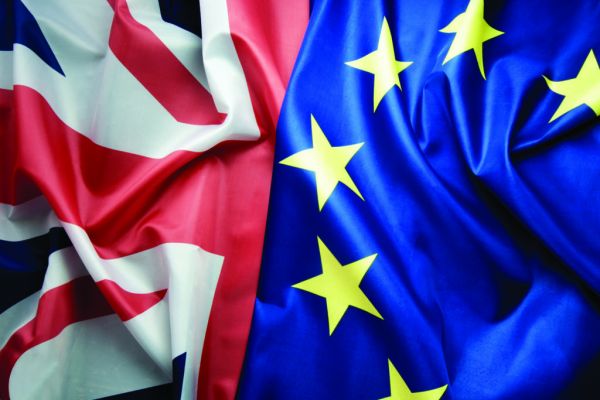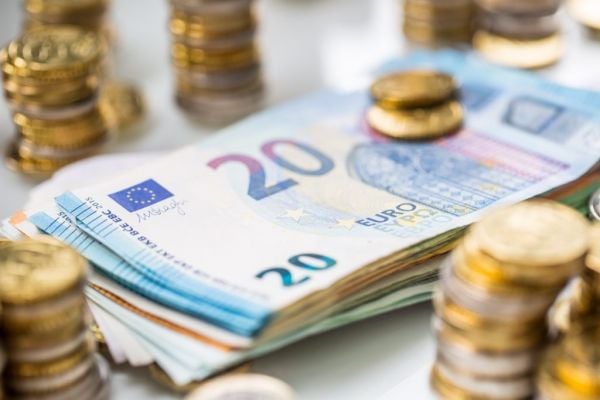Thanks A no deal Brexit will create tariffs, which will damage trade and cause prices to rise. Retail consultant Sean Collins of Rapid Grocery Market Clarity examines the likely impact on Ireland – and on the Irish consumer
To quantify the impact of Brexit on Ireland we first have to avoid going down rabbit holes and concentrate the analysis on the economic relationship between the UK and Ireland and, secondly, assume that we are heading for a hard Brexit.
The result will be tariffs applied by both the EU and by the UK. To allow us to quantify the impact let’s assume that while some product areas may be unaffected and others heavily affected, a mean tariff in both directions of circa 10% is a probable outcome.
The UK and Ireland will rigorously explore many available alternative trade options with the result that both territories will experience a reduction in affected exports to one another of closer to 15%!
This has to be the case because if a 10% tariff on UK food imports was simply allowed to flow through to Irish consumers it would create additional total market food inflation of over 5% as the UK represents such a major part of the source of food for Ireland.
I am concentrating my evaluation on two aspects of Brexit and calculating the likely impact on Ireland with regards to trade and on price.
The impact of tariffs on the volume of exports from Ireland to the UK will likely lead to a 10% rise in the price of Irish goods in the UK, which will reduce demand by 15%, as some companies will switch markets completely and others will choose to import much less by generating growth through alternative sources.
The impact of tariffs on the price of goods in Ireland is likely to take the form of a 10% tariff on goods received from the UK, which will result in a price rise of 10% on those items in the receiving market
Let’s summarise the impact of these two aspects.
To allow us to create a meaningful evaluation, we need to take a snapshot of the Irish economy.
The economy had a total value of €378 billion GDP in 2018, growing by 8.2% 2018 on 2017, the highest growth rate in Europe.
Already in the first six months of 2019, the economy is expanding by 4.6%, again the highest in Europe. Exports for the Irish economy stood at €141 billion in 2018 and they grew by a further 13% in the first half of 2019.
Employment grew by 69,000 in 2018 and the central government budget was in surplus in 2018 for the first time in 11 years, despite a 17% increase in capital spending in 2018.
Ireland’s trade with the world is solid
At the current 13% growth rate, Irish exports are likely to hit €159 billion in 2019 (see CSO), of which little over 7% is to the UK.
At the current 9% growth, imports are likely to reach €98 billion in 2019, creating a trade surplus of €61 billion in 2019.
So, on the whole, while there are global rumblings that should concern us, the fundamentals of the Irish economy are sound.
Ireland’s trade with the UK is also performing well.
Based on the growth rate in the first five months of the year, imports from the UK will reach an expected €14.5 billion in 2019 and exports to the UK will reach circa €10.4 billion in 2019, so imports from the UK will exceed exports by €4.1 billion.
In fact, the gap grew by a further €410 million in the first five months of 2019, and at that rate Britain will receive just over 7% of our exports and deliver 22% of Ireland’s imports.
Tariffs
The most realistic way to evaluate the impact of tariffs is to estimate that a 10% tariff will generate a 15% reduction in trade, as both markets will not simply accept the rise in cost but rigorously look to engage with cheaper alternatives.
The first impact will be that €10.4 Bil. of Ireland exports to the UK, will experience a circa 15% reduction or exports reducing by €1.5 Billion.
Secondly circa 85% of the €14.5 Bil. in imports from the UK, or €12.3 Bil. of UK goods, arriving into Ireland will rise in price by 10% or by €1.2 Bil..
To offset the loss of trade with the UK Ireland will need to grow exports to the rest of the EU by 2% in 2019.
This is absolutely achievable given that export growth to markets in the EU other than the UK were 17% in the first 5 months of 2019.
Ireland will also need to secure the frequently discussed EU aid of €500Mil. to protect the EU from the fact that 0.2% of total EU growth is currently generated by the Irish economy!
Impact of tariffs on food exports to the UK
The one area of concern for Ireland is the impact of Brexit-related tariffs on the Irish food industry, where our exports to the UK exceed our imports by €800 million.
Using the same logic as we applied to the total Irish export market, Ireland’s €4.5 billion worth of food exports to the UK could drop by 15% or by €680 million.
The Irish food sector would require growth in exports to the rest of the EU of circa 6% to offset those losses, and would also need to concentrate most of the support received from the EU fiscal budget on the Irish food sector.
Happily, Brexit preparation in Ireland is most intense in the food sector.
As of July 2019, 93% of Irish food exporters are well prepared for a no-deal Brexit - 55% are now holding more than three weeks stock outside of Ireland, 96% have been working feverishly with suppliers in the last six months to prepare for Brexit, 74% are actively seeking new markets in response to Brexit, and 57% have already secured strong growth outside the UK between 2018 and 2019.
So, how does the Irish consumer cope?
The Irish grocery market is worth €13.2 billion a year, which is up by 3.2% in the first half of 2019 versus 2018.
Some 1.5% of that rise is due to a growth in population of circa 75,000 per year and most of the rest of the growth is due to grocery price rises of circa 1.7%.
The average Irish household spends €7,800 a year on groceries, so if prices rise sharply it will have a significant impact.
The challenge for the Irish consumer will be to make sure the household budget is not hit hard by Brexit. The choices consumers will face will be, ‘do I shop around for the best buys in the market or do I find one retailer who is getting every element of value right for me?’
Every week Dunnes Stores, Tesco, SuperValu, Lidl and Aldi spend over €6 million on the sharpening of prices through special offers and on advertising them to attract Irish shoppers.
The problem with chasing offers is that the average Irish household would have to travel 60 kilometres in order to use all five of the big grocery retail brands, every week.
This would cost the average household circa €550 a year, so that’s not a solution!
Weighing up the options
Having examined all the value options that Irish shoppers can avail of, the one with Dunnes Stores really catches my eye.
The average Irish household unit spends €150 a week.
If that household simply concentrates its spending with Dunnes Stores, through a range of five different benefits, it can save €42 every week. Firstly, they can save €30 by using three €10 off €50 vouchers every week.
In addition, by availing of the saving stamp scheme that Dunnes operates, they can save a further €3 a week.
This involves filling out and using three cards of €100 in stamps every two weeks and availing of €6 off through the three free stamps on those cards.
Furthermore, by using a ValueClub card in every transaction, they will be able to wipe a further €1.50 off their weekly shopping bill.
Yet another substantial additional benefit is that if, like 69% of Irish households, you occasionally like a glass of wine, you can avail of the multi-buy wine offer, which gives you 25% back through you ValueClub.
So, when the consumer spends €60 on six bottles of wine, they will receive €15 back in their next ValueClub mailing.
By doing all the above for the 18 weeks from Easter through to the back to school period in Dunnes Stores, a household consuming two bottles of wine per week could have earned €180 in cashback.
Finally, by using that €180 with four €10 off €50 voucher, they will be able to pick up €220 worth of goods without spending a cent!
Consumers can generate a weekly saving of €42 or 28% on their household bill by availing of this combination of retailer supports.
Yes, Brexit will hurt, but to help them cope, the Irish consumer is constantly being provided with new retail choices.
One primary question facing the Irish consumer is do we spend an extra €550 a year on fuel chasing the best grocery offers every week, or do we stick with one retailer and save €2,200 a year?
© 2019 Checkout – your source for the latest Irish retail news. Article by Sean Collins. Click sign-up to subscribe to Checkout.






